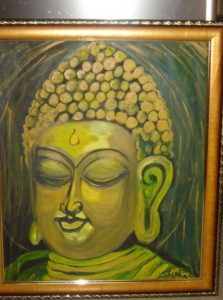Cellulose Fiber : Magic Ingredient in Paper Making That Spiralled Communication To Next Level
Use paper judiciously
The first Papermaking process, a magical invention, was documented in China as about 2000 years ago in Eastern Han Period. A Chinese Court official Ts’ai Lun (Cai Lun) is considered as the inventor of First paper in Lei -Yang, China. Cellulose fiber the magic ingredient in papermaking that spiraled communication to next level is found to be common, in all historical materials used as paper in the past, as pulp, plants, cotton , cloths, rice, water plants, bamboo, wood, silk and so on.
Ever thought about interesting invention paper, which was there and again in the news, because of the latest craze during pandemic. A commodity around which education and economy revolves!
Many materials were used before paper was invented. Here is a list of materials used all over globe in different regions for written communications.
Writing materials before Paper
For written communications people used signs and sketches to communicate information. In most of them one magic ingredient is common and that is cellulose fiber. Cellulose are building blocks of all plant materials. Following materials were used for writing:
- Wood Pieces
- Clay blocks
- Papyrus (used in Egypt to make paper type material for writing)
- Slate
- Rocks
- Parchment (dried and prepared animal skins, Old Mesopotamia, Egypt , Iran)
- Vellum (animal skin or membrane, used in Mesopotamia, Egypt , Iran)
- Wood pulp
- Bark of trees
- Old rag clothes
- Silk.
- Conifer trees (evergreen and fast growing used in United States)
Main Raw material used for making paper is cellulose fiber which is durable and give strength to paper. Found in all plant materials. They are extracted from wood and present in paper pulp used to make paper.
Paper Pulp
Main raw material paper pulp is made as one of the steps in papermaking process. It is made from conifer tress , wood, cotton, hemp, jute and range of plant material. Paper pulp is made using vegetable, minerals, man- made fibers, sugar cane residue, bagasse, saw dust, wood chips and water.
Ecofriendly Tree-Free Paper Pulp
Research are being made to create tree- free paper pulp. Different alternate materials are also being considered. Wild plants and fiber rich crops are cultivated especially for the purpose. For example, Bamboo, Hemp, Flax, Jute, Kenaf, Linden, Milkweed, Okra, Nettle, Paper Mulberry and so on.
Usage of Paper
Many centuries people have used this paper material to document sacred knowledge for scholars and religious purposes. Information been stored and passed on to generations this important source of written communications.
Creation of Newspapers , Magazines , Periodicals, Educational books and Entertainment magazines helped in sharing knowledge for generations from past era to present where paper finds usage in multiple areas as packaging, Art and Craft, House beautification, Interior Decorations, and even fashion and clothing!
Paper Making Process
Paper making process involves several steps in Paper and Pulp industry. I t all starts with the raw material paper pulp preparation, processing , drying , cutting and packaging.
Step 1 : Pulp Preparation- Using Raw material and Water
Step 2 : Pulp Spread- in Paper Machine Spreading Pulp in wet end of paper machine. 99.5 % water and 0.5 % pulp.
Step 3 : Pulp Press against cloth wrapped filters. Water still at 60%. Paper in form of Wet Felts.
Step 4 : Dryer Section- Paper felts are passed through and dried in steam heated dryer where water % left is 2–6%.
Step 5 : Size Press- Paper felts are applied with starch solution on both sides. It enhances the sheets water resistence and ink absorption during writing and printing. This steps allows to absorb certain level of toners and printing ink for digital printing.
Step 6 : Calendar Stack- Passage of paper sheets through calendar stacks press them further for smoothness and fine paper quality.
Step 7 : Winder- End Region of Paper Machine- Here paper sheets are wound on a large reel called winder where they are slit into manageable size sheets of two types; 1. sheets for web printing press 2. Size that can be stacked in boxes. Here sheet size is adjusted to reduce wastage of paper.
Step 8: Stamping- Here rolls, sheets and cartons are stamped with run number for quality purposes of the lots.
Reference : Step1–8 [https://www.domtar.com/en].
Next time before using paper, think of all the efforts and resources involved and make judicial use of it. Try to rethink, innovate and find alternative ways to convey information. Find use of different means of written communication. Recycle paper and reduce wastage! Recycle, think green and sustainable ways of communication!
Recycle…. Reuse…. Rethink….. and …….Repeat………!!
